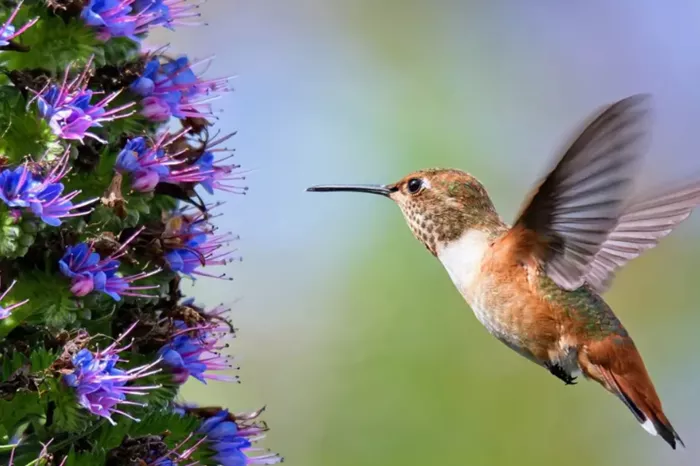A team of scientists from South Africa and Brazil has uncovered new insights into how plants may compete for space on pollinators, with pollen grains vying for transport to other flowers. According to research published in The American Naturalist, plants have evolved sophisticated strategies to control how their pollen is placed on pollinators, similar to the way some animals manipulate sperm during reproduction.
Pollen Competition Among Plants
Unlike animals, plants rely on external agents, such as birds and insects, to transfer pollen between flowers. To ensure successful reproduction, plants must secure a way for their pollen to stick to the pollinator and reach the next flower.
The study’s lead author, Professor Bruce Anderson from Stellenbosch University, explains that plants’ strategies resemble male-to-male competition in the animal kingdom. “Flowers visited by hummingbirds deposit their pollen on the bird’s bill, but there is limited space for pollen,” he says. Flowers have developed mechanisms to launch pollen onto the hummingbird’s bill, dislodging pollen from rival plants in the process. This action clears space for the flower’s pollen, increasing its chances of successful reproduction.
This finding supports the idea of competitive pollen removal, where flowers actively clear rival pollen from pollinators before placing their own.
Explosive Pollen Placement
The researchers conducted experiments using the Hypenea macrantha, a red flower native to Brazil. They captured slow-motion footage showing how the flower uses an explosive pollen placement mechanism. This “catapult” action allows the plant to launch its pollen onto the hummingbird’s bill, dislodging any pollen from competing flowers.
While explosive pollen placement is not entirely new, this study is the first to provide empirical evidence of its effectiveness. The team tracked pollen movement using quantum dots and confirmed that the mechanism successfully displaces pollen from rival plants.
A New Look at Floral Competition
Traditionally, floral explosion was thought to help plants either efficiently place their pollen on pollinators or startle them into moving pollen to other plants. However, this study suggests that it may also serve to displace rival pollen, giving a plant a reproductive advantage.
“Our data shows this mechanism can improve male reproductive success by increasing competition for space on the pollinator’s body,” says co-author Vinícius Brito, a botanist at the Federal University of Uberlândia in Brazil.
Pollen Rivalry and Plant Reproduction
The research reveals a previously overlooked form of plant competition. Unlike animals that may use physical structures to remove rival sperm, plants must rely on manipulating pollen placement on pollinators to ensure reproductive success. When a pollinator arrives at a flower, it is often already covered in pollen from previously visited plants. This limits the space available for the new flower’s pollen, forcing a hidden but crucial competition between the pollen grains for reproductive success.
Impact on Understanding Plant Evolution
This discovery adds a new layer to our understanding of plant evolution, suggesting that plants may develop strategies similar to those in animals to compete for reproductive success. By manipulating pollen placement on pollinators, flowers may be engaging in a competitive battle for space that was previously unnoticed.
As research continues, these findings could reshape how we view plant reproduction and competition. Anderson and his colleagues believe that this type of competition is an essential factor in understanding the evolution of plant species.
In conclusion, this study introduces a fascinating new perspective on plant reproduction and competition, showing how plants interact with pollinators and each other in their quest for survival. As Brito notes, further research is necessary to fully grasp how these mechanisms shape the natural world.
Related topics:
- Caring for Your Plants This Winter: Tips for a Thriving Garden
- Pollen Wars: How Plants Compete for Space on Pollinators
- Ways to Shield Your Plants from Cold Weather


